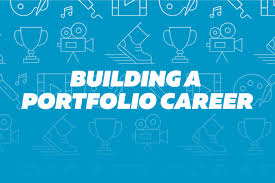Building a Career Portfolio: Why Student-Athletes Should Create One

In today’s competitive job market, it’s no longer enough to simply have a resume. For student-athletes, who often juggle academic commitments with intense training and competition schedules, standing out to potential employers requires more than just listing achievements. A well-crafted career portfolio can be the key to showcasing a student-athlete’s full potential, blending athletic experiences with academic accomplishments, and providing a comprehensive view of skills and qualities that may not be evident on a traditional resume.
A career portfolio is a dynamic collection of materials that highlights a person’s work, achievements, and skills in a format that goes beyond a resume. While resumes are typically limited to a single page of bullet points and accomplishments, portfolios offer the opportunity to provide deeper context, more detailed examples, and visual evidence of work. For student-athletes, this means demonstrating how their time in sports has developed key skills that are highly transferable to the workplace.
One of the primary benefits of a career portfolio is that it allows student-athletes to present a holistic view of their abilities. This is important because many athletes have developed soft skills through their sports careers—such as leadership, teamwork, discipline, and time management—that may not always be immediately obvious to employers. These skills are often learned on the field or court but can be applied in a variety of work environments, making them valuable assets for future employers. A portfolio can showcase these skills through specific examples, such as a leadership role on a team, instances of overcoming adversity in a game, or strategies for balancing a demanding athletic schedule with academic responsibilities.
Furthermore, a portfolio enables student-athletes to illustrate their academic achievements alongside their athletic ones. For athletes, academics can often be overlooked, especially when their sports performances dominate public attention. However, many employers value a well-rounded individual who can excel both in sports and academics. A career portfolio allows student-athletes to include academic achievements, certifications, and course projects that show their ability to perform in the classroom. For example, they can include samples of research papers or presentations that highlight critical thinking, problem-solving, and communication skills—valuable qualities for any job.
Student-athletes can also use their portfolio to demonstrate their personal and professional growth over time. This is especially important when transitioning from athletics to the workforce. By documenting their experiences, challenges, and achievements, athletes can show potential employers how they’ve evolved and matured throughout their careers. This type of reflection not only gives employers insight into a student-athlete’s character and resilience but also provides the athlete with a clearer understanding of their journey and growth. This process can be instrumental in preparing for interviews, as it allows athletes to speak about their experiences in a structured and meaningful way.
In addition to soft and hard skills, a career portfolio can include tangible evidence of work completed. For student-athletes, this could include videos of performances, press clippings, or photos of achievements. These visual materials are incredibly powerful for showing, rather than just telling, what an individual is capable of. For example, a video clip of a game-winning play or an award ceremony can help employers see firsthand the level of skill, dedication, and success the athlete has experienced. These visuals create a more engaging and memorable impression than text alone.
Another advantage of a career portfolio is that it serves as an evolving document that can be tailored to different job opportunities. While a resume is often a one-size-fits-all document, a portfolio can be updated and customized to reflect the specific skills and experiences that are most relevant to each job application. For example, if an athlete is applying for a marketing internship, they can highlight projects or experiences where they used their social media presence to engage with fans or promote team events. If they are applying for a project management role, they can showcase examples of leading teams, organizing events, or coordinating resources for a game or competition.
Building a career portfolio also encourages student-athletes to reflect on their accomplishments and future goals. The process of compiling their work and achievements forces them to take stock of what they have accomplished, the skills they have developed, and the areas in which they want to continue growing. This kind of introspection is not only valuable for creating a strong portfolio but also for personal development. It helps student-athletes recognize their strengths and areas of improvement, which can be critical when setting goals for life after sports.
Moreover, a portfolio can serve as a tool for networking and professional development. When student-athletes attend job fairs, career events, or alumni gatherings, having a portfolio on hand can make a significant difference. Instead of handing out a standard resume, they can provide potential employers with a more comprehensive and personalized look at their qualifications. A portfolio can act as a conversation starter, allowing the athlete to elaborate on their experiences and skills in a way that a resume simply cannot.
For student-athletes unsure of where to start, creating a career portfolio is easier than it might seem. The first step is collecting documents that showcase accomplishments, such as awards, certifications, team leadership positions, and academic successes. From there, athletes can include samples of their work, such as videos, photos, or written assignments. Finally, they can focus on organizing and presenting these materials in a visually appealing format, using digital tools like Canva, Adobe Spark, or even LinkedIn’s portfolio feature.
In conclusion, a career portfolio is an essential tool for student-athletes looking to transition from sports into the workforce. It offers a more comprehensive, dynamic, and personalized way to present their skills, experiences, and achievements to potential employers. With the right tools and approach, student-athletes can use their portfolios to stand out in a competitive job market and set themselves up for long-term career success.


Responses